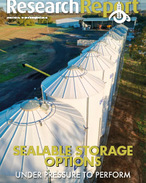This article is 5 years old. Images might not display.
The BOM's Spring Outlook reports much of Australia has a high likelihood of above average rainfall in the coming months and daytime temperatures are likely to be average to below average throughout southern Australia and warmer than average in the north.
BOM manager of Climate Operations, Dr Andrew Watkins, said the outlook was being largely driven by changes in sea surface temperatures in the tropical Pacific and Indian oceans.
"Most long-range forecasts analysed by the Bureau, including from our own climate model, are indicating a La Niña could develop in the spring, which typically results in above-average winter-spring rainfall for Australia, particularly across eastern, central and northern regions," Dr Watkins said.
"A La Niña also typically brings cooler and cloudier days, more tropical cyclones, and an earlier onset of the first rains of the northern wet season."
Dr Watkins said spring was typically a time of year when outlook models had a higher reliability.
"At this time of year, we start to see some of our main climate drivers locking in, which gives more certainty about what our weather patterns will be like in the coming months.
"We're starting to see that in the Pacific with a La Niña beginning to take shape, and we are also seeing some changes in the Indian Ocean, which may also boost the chance of rain during spring."
Dr Watkins said the recent winter period is likely to be one of the warmest on record, with above average temperatures particularly prevalent across Western Australia and Queensland.
He also said that while the start to winter was very dry, August was the first wetter-then-average August since 2016.
"Overall, winter was drier than average for every state except New South Wales. It was particularly wet in Gippsland in Victoria and the south coast of New South Wales.
"Earlier in the winter period, conditions were drier than normal, as rain bearing weather systems were being blocked by a belt of high-pressure systems sitting across the country."























